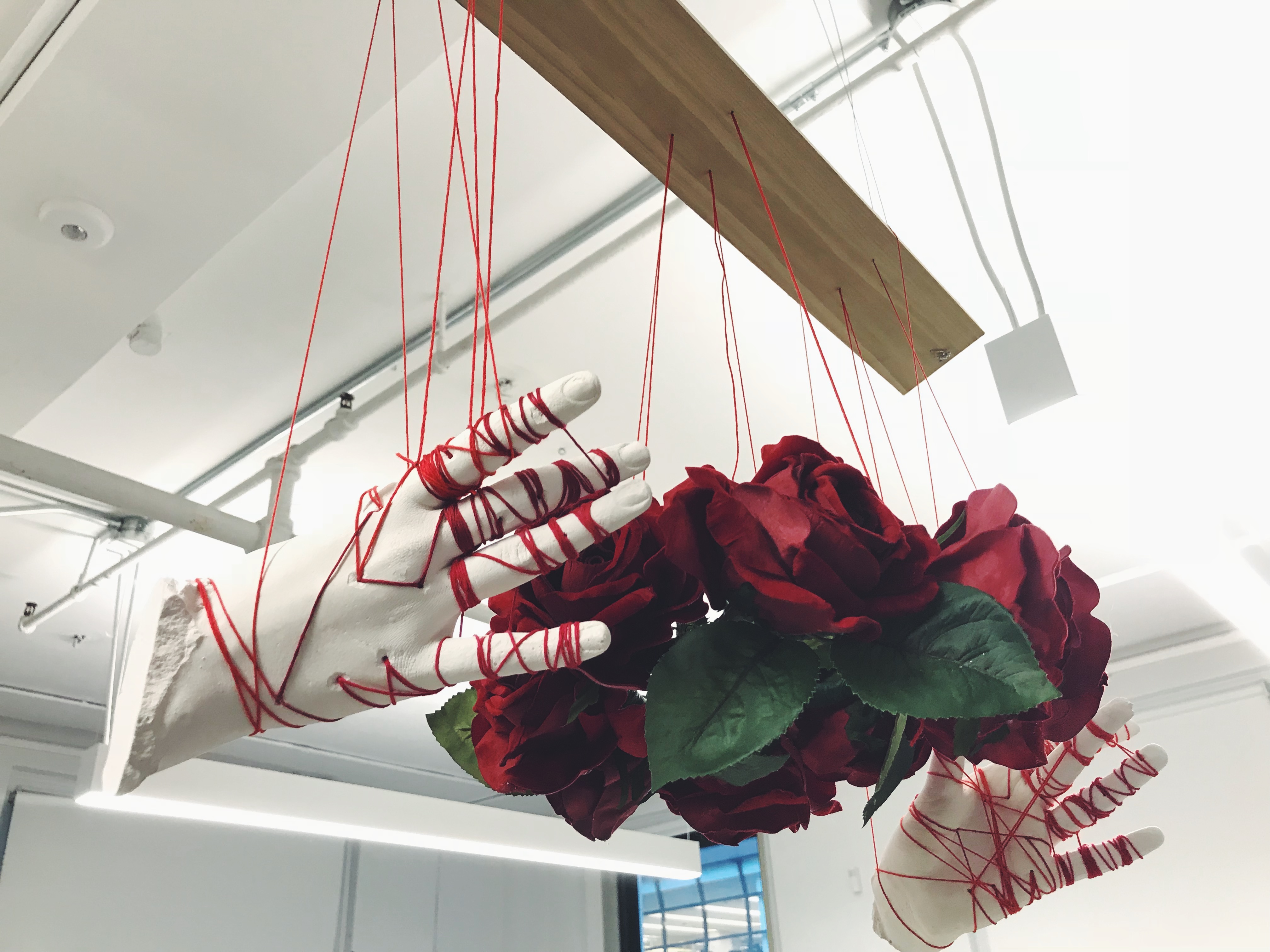“Crowning Moment”
MATERIALS:
Silk Roses
Floral Tape
Floral Wire
Plaster
Alginate
DMC Embroidery Floss
Super Glue
Wire (18 Gauge)
Poplar Wood
Dimensions: (2.5′ x 2′ x 1′)
Installation Photos:
Plaster Cast:
The Process of Alteration:
To alter the casts, I drilled holes into each of the hands and then I wrapped DMC embroidery floss around and through each of the hands.
Process Photos:
This was right after I de-molded the first hand. I knew that I was gonna have to figure out a way to fix the fingers and at this point I was a little panicked.
This was right after I de-molded the second hand and at this point I had to re think the project.
I had all my tools and I had a new plan for the alteration of the hands.
Reflection:
- Describe, using specific adjectives, the qualities and atmosphere of the habitat, or inhabitable space, that you created for your memory.
To represent my memory, I created an inhabitable space that the viewer can stand under. I created a crown of flowers and two hands that are placing it on your head. I would describe the atmosphere as tangled but clean, light (weight),
- What types of inhabitable spaces in the world informed or inspired the design of your project?
I watch several shows hat are based on royalty and the monarchs in France. There are serval instances where a new monarch has a coronation and the moment that they are crowned and they become king or queen is a very powerful moment for the show and also for me.
3. Write about how you defined an interior and exterior space and curated the experience or movement of your audience in relation to your piece. Discuss how your project involved or engaged the body of the audience in the experience of the piece, as opposed to just their sense of sight.
I defined an interior space under the crown. I hung it at the height of an average person to make it fairly obvious that the intent was to stand under the piece. I wanted the viewer to experience the the sense of being crowned through my piece.
- What did you cast in plaster, and why?
I cast both of my hands in plaster because I needed two hands to show the crown being placed on a head.
5. What skill or technique did you use to alter your cast and why? How does your substantively altered plaster cast communicate aspects of your memory through mass and texture?
to alter the plaster, I drilled holes into the plaster cast hands and I wrapped DMC embroidery floss around and through the hands. I wanted the string to physical go through the hands because to me it feel more secure and it makes a bigger impact. The color red was a big part in communicating aspects of my memory and the way that it was wrapped through and around the hands showed the mass of the piece.
- Describe how you chose to display or present your work in relation to the architectural context of the piece.
I really wanted the piece to be hanging so that the viewer could easily just stand under the piece and experience it without having to do much.
7. Write any further thoughts about the experience you intended to create for your audience, and discuss the strengths and weaknesses of your piece.
This project had a lot of ups and downs for me. At the beginning everything was going wrong and I didn’t know if I was going to be able to finish it on time. I struggled a lot with fingers breaking off and drilling holes and I considered starting from scratch several times but I knew there wasn’t time for that. To make improvements, I would first start with a thicker, stronger plaster mix and make sure that when I de-mold it to be very careful. I would also make the string more messy and tangles and more chaotic and have much more of it. But, over all I am very happy with how it turned out and I am proud of what I accomplished.







